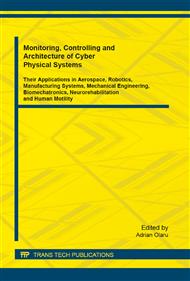p.507
p.515
p.524
p.534
p.542
p.552
p.561
p.569
p.578
Estimation of Hydrogen and Electrical Energy Production by Using Solar and Wind Resources for a Residential Building from Romania
Abstract:
This paper illustrates the results of analysis of the technical potential for hydrogen production and providing electrical energy by fuel cell for residential consumer, through a system that has the basic components such as photovoltaic panels, wind turbines generator, electrolyser and fuel cell. The study estimates the production of hydrogen and electrical energy of this hybrid system for five different areas of Romania, using the following parameters: daily global solar irradiations on horizontal plane and wind speed. Analysis of hydrogen production by using solar and wind resources and ensuring electrical energy by fuel cell, that resulting from proposed autonomous hybrid system was performed through the performance indicators as follows: electrolyser operating time, energy consumed by the electrolyser and hydrogen production, respectively fuel cell operation time and the electrical energy obtained. The objectives of this study include the development and simulation testing of the best situations (methods) for producing hydrogen and ensuring electrical energy by fuel cells from hybrid renewable resources available in Romania. The results show that the use of such systems for hydrogen production and electricity insurance to residential building is relatively advantageous, the total annual production of hydrogen is estimated to be around 77,87 m³ and the total annual electrical energy delivered by fuel cell is estimated to be around 779 kWh, also the equipment components that will make the best configuration of the hybrid system are dependent on the availability of renewable resources.
Info:
Periodical:
Pages:
542-551
Citation:
Online since:
October 2014
Price:
Сopyright:
© 2014 Trans Tech Publications Ltd. All Rights Reserved
Share:
Citation:


